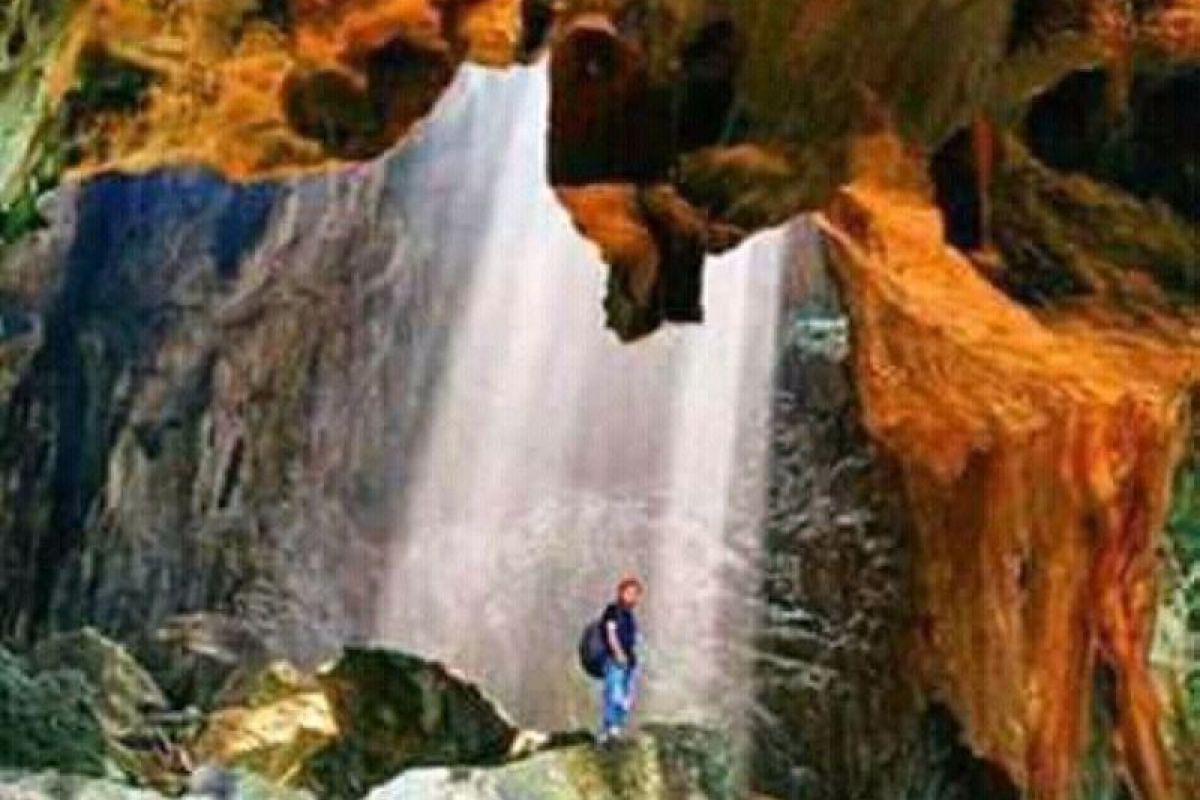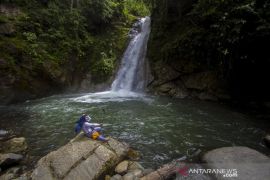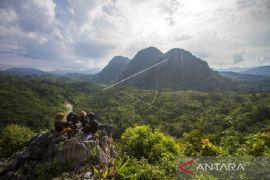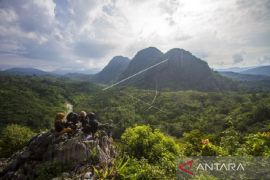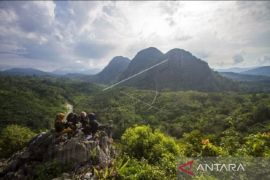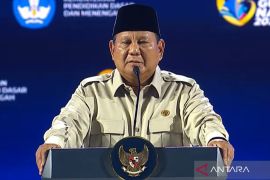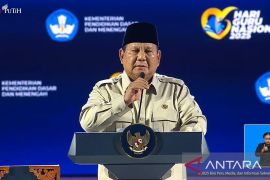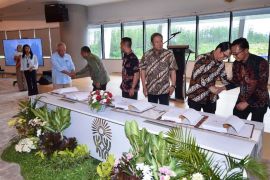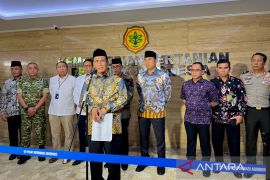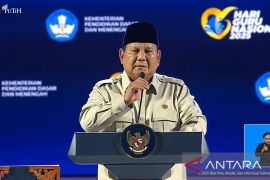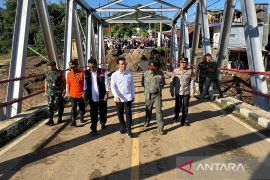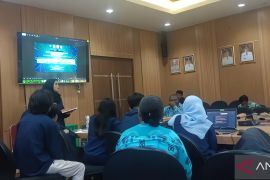A group of trekkers prepared to go downhill on the slippery trail of the Batu Sawar Hill to continue their journey before darkness enveloped the tropical rainforest.
"Look.... rainbow," Agus, a guide for the trekkers, shouted. He enthusiastically pointed at the colorful perfect arcs that has become the foreground of the mountain range.
The trekkers had just left to explore Lawar Cave, an adventure tourist destination in Nateh Village, located some 35 kilometers from Barabai, the capital city of Central Hulu Sungai District in South Kalimantan.
As it was named --"lawar or kelelawar" means bat -- the cave is home to bats. Locals also call it the Batu Sawar Cave.
Villagers also collect bat droppings for fertilizers, both for personal use and commercial benefit.
Situated 200 meters high on the hill, the cave, with a five- to six-meter-wide mouth, is reachable in one to two hours by trekking as slippery, steep 45- to 70-degree path.
However, all fatigue of a long hike paid off as the visitors reach the cave.
From this cave, visitors can enjoy the unimpeded view of the mountains.
Related news: Exploring the unconventional destination of Meratus Mountains
The Batu Sawar Cave has two rooms, with the first having two small holes on its marble roof that lend a dramatic sunlight effect while shedding light on the dark green rocks.
The second room is quite dim that bring visitors to another mouth overlooking the Halau-halau Mountain, the highest peak in Meratus.
Agus noted that there were eight caves in the karst area.
"Lawar Caves has the steepest path. Other caves can be reached through a quite flat trek," he remarked.
Each cave has its own beauty. Air Kukup and Ali Caves, for instance, are well-known for the river in the caves, while the Berangin Cave is known for its giant stalactites and stalagmites.
Those looking to enjoy nature from the lower ground can opt for a level-2 rafting on Batang Alai River to experience its clear waters from close range.
It is an easy rafting trip on a river surrounded by mountains that provide up-close views of the indigenous Dayak ethnic group’s daily life.
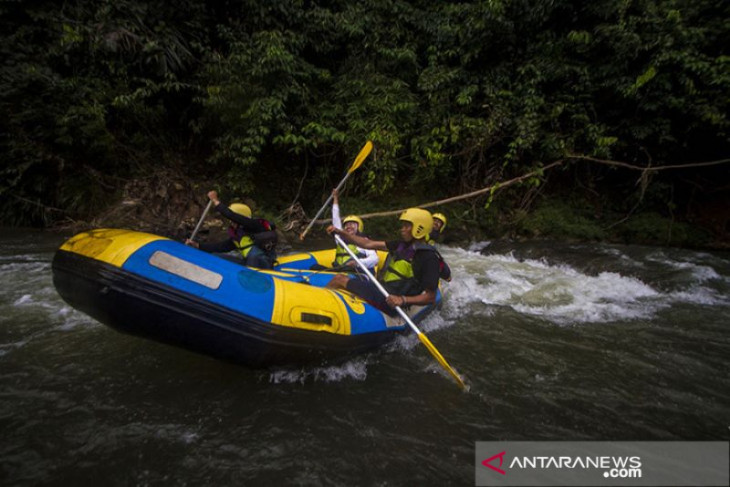
Meratus Mountains offer a plethora of destinations for special interest tourism, with its virgin hilly forest, mountain ranges, and crystal-clear rivers.
It is a place where the hills sing and heaven calls.
Meratus has been declared as a national geopark area since 2018, covering 67 geosites in 10 districts and cities, most of them being located in South Hulu Sungai and Central Hulu Sungai.
The geosite has forest, cave, waterfall, lake, hills, karst mountains, and valley.
Nateh Village alone offers various adventures in the form of caving, tubing, rock climbing, and rafting.
Chairman of the Indonesia Adventure Travel Trade Association (IATTA) of the South Kalimantan branch Bandi Khairullah stated that Nateh is one of the villages in the Meratus area that has been prioritized in the development of ecotourism in the province.
"South Kalimantan is the golden triangle for tourism in Kalimantan, especially with the beauty of Meratus stretches from South Hulu Sungai to the Central Hulu Sungai and Tabalong districts," he stated.
Meratus Mountains, spanning 600 kilometers, traverses three provinces -- South, East, and Central Kalimantan -- with the largest parts situated in South Kalimantan.
Related news: A closer look at Dayak Meratus' thanksgiving ritual
From its upstream to downstream area, Khairullah noted that the mountains offer various attractions, such as bamboo rafting along the Amandit River and exploring the indigenous Dayak culture.
However, Khairullah admitted to inadequate infrastructure and management of the destination, in addition to the lack of promotion, which had become the main issue.
"IATTA will improve the quality (of the tourist destination) including its guide, management, and villagers, to establish sustainable ecotourism," he stated, adding that tourism would create jobs for the locals.
Meratus Mountains, composed of Ofiolit rocks aged between 150-200 million years, is the oldest in Indonesia.
It also has Plagiogranite, a rare type of rock found only in Greece, France, and Indonesia.
The South Kalimantan government has prepared to propose Meratus to the United Nations Educational, Scientific and Cultural Organization (UNESCO) to be registered as a UNESCO Global Geopark (UGG) in 2022.
As part of the plan, in 2021, the province's Public Works and Public Housing (PUPR) Office is improving the infrastructure at six geosites, including the traditional diamond mine in Banjarbaru District, Plagiogranite Mt Batu Besar Geosite in Tanah Bumbu District, Serpentinite Forest Park (Tahura) Mandiangin Geosite in Banjar City, and Tanjung Dewa Geopark in Tanah Laut District.
A geopark should have geological wealth and involve local people in protecting and improving the natural heritage's function, including its archeological, ecological, and cultural values.
Development of the Meratus Mountains Geopark, in fact, has demonstrated the government's commitment to protecting the natural wealth of Meratus, including its culture.
Related news: Indonesia eyes inclusion of Meratus Mountains into UGGp list: ministry
Editor: Rahmad Nasution
Copyright © ANTARA 2021
